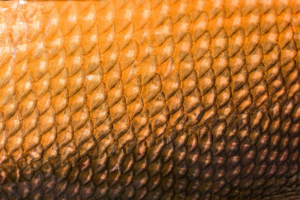25/10/2024
When it comes to EPO oppositions, public prior use attacks can be powerful. But understanding their nuances is essential for success. Below, we explore the basics of these attacks and some tips based on our experience and case law.
What are public prior use attacks?
Public prior use is a form of prior art. Public prior use attacks are attacks that rely on public prior use as evidence, and can be novelty or inventive step attacks.
The use can take many forms – it can be commercial or non-commercial, and can involve selling, testing, or demonstrating an invention.
The use must have taken place prior to the effective date of the claim being attacked. A claim’s effective date is:
- the priority date of the patent (or one of the priority dates if there are multiple) if the claim is entitled to priority; or
- the filing date of the patent if the claim is not entitled to priority.
The use must have been public in the sense that a member of the public was, or could have been, able to access and understand the invention with no obligation to maintain secrecy.
Public prior use attacks can be powerful because the EPO does not often find public prior use when examining patent applications, so the attacks are unlikely to have already been considered by the EPO during examination. In addition, where the public prior use relates to the use of a product or method which the patent is aiming to protect, public prior use attacks can sometimes apply to most, or even all, of the patentee’s useful fallback positions.
What evidence is needed for a public prior use attack?
For a public prior use attack, an opponent needs evidence of:
- when the use occurred;
- what was made available to the public by the use; and
- the circumstances of the use (generally where, how and by and to whom).
In theory, this is straightforward. In practice, there are a number of pitfalls to avoid as opponent and to look out for as patentee. Some of our ‘tips for success’ are set out later.
What forms of evidence are acceptable?
The EPO does not set any restrictions on the form of the evidence. So the evidence could include any of the following:
- Photos or videos.
- Manufacturing records.
- User manuals and other technical documents.
- Marketing materials.
- Sales records such as invoices or receipts.
- Witness testimony.
What is the standard of proof for public prior use attacks?
The applicable standard of proof depends on how easy it is for the opponent and patentee to access the evidence.
If the opponent and the patentee have equal access to the evidence, the applicable standard of proof is the ‘balance of probabilities’ (T 1776/14). Examples include situations where the product is mass-produced and widely circulated (T 55/01), and situations involving purchases or purchase agreements between two companies, neither of which have any kind of business relationship with the opponent (T 64/13).
Alternatively, if the evidence lies within the sphere of the opponent and the patentee has little or no access, the applicable standard of proof is ‘beyond any reasonable doubt’ (T 472/92). Examples include situations where the prior use was undertaken by the opponent themselves (T 483/17) or by a subsidiary of the opponent (T 703/12).
Tips for success
Over the years, Reddie & Grose have gained substantial experience with public prior use attacks. Below, we set out some tips based on our experience and relevant case law.
Arguing for a favourable standard of proof
For both opponents and patentees, it may be worth arguing, ideally from the outset and with supporting evidence, for the more favourable standard of proof – ‘balance of probabilities’ as opponent, and ‘beyond reasonable doubt’ as patentee. This point may seem obvious but its importance cannot be overstated. In our experience, the success of a public prior use attack can hinge on which standard is used.
Explicitly requesting comments on the public prior use attack in the preliminary opinion
Where a public prior use attack is particularly important for the opponent, it is advisable that the opponent explicitly requests that the Opposition Division provides detailed comments on the attack in their preliminary opinion (which is usually issued a few months before a hearing at which the Opposition Division makes a decision on the opposition). The request does not guarantee that the Opposition Division will provide detailed comments but our experience so far has been positive. Detailed comments in the preliminary opinion can be helpful as they can allow the opponent to focus on any areas of the attack where the Opposition Division preliminarily considers the evidence to be insufficient.
Explicitly requesting enlargement of the opposition division
It may be worth explicitly requesting that the Opposition Division is enlarged by adding a legally qualified member to the usual three technically qualified members. This may reduce a risk of the Opposition Division not handling the public prior use attack appropriately. Enlargement of the Opposition Division is common when public prior use attacks are involved, but we see no downside to explicitly requesting this enlargement, especially where witness testimony may be heard at the hearing.
Not forgetting that evidence supporting a public prior use attack may be used as prior art for other attacks
In one recent opposition where Reddie & Grose were representing the opponent, our public prior use attack was not successful. However, we successfully argued that the evidence supporting that attack, including catalogues, brochures and internet disclosures, should be admitted as prior art or evidence of common general knowledge, and so could be used to support subsequent inventive step attacks.
Offering or requesting witness testimony
It is common to submit witness statements or affidavits to support public prior use attacks. In this case, offering oral witness testimony at the hearing may provide credibility to the witness and an opportunity for the witness to fill any gaps at the hearing. In our experience, a public prior use attack is more likely to be successful if witness testimony is offered. We have seen a public prior use attack be dismissed by the opposition division seemingly primarily because a witness was neither heard nor offered to be heard.
From the patentee’s perspective, requesting that a witness is heard may provide a chance to pick holes in a witness statement at the hearing and to extract tactically useful statements on the alleged public prior use.
Proving when the use occurred
It is crucial for the opponent to be able to prove that the use occurred before the relevant date of the claim being attacked.
T 1217/01 provides an example of an opponent failing to prove when the use occurred. In this case, the use related to the sale of a product with a particular composition. The opponent filed a dated invoice in an attempt to prove when such a product was sold. But the invoice did not disclose the composition of the product to which it related. The Board therefore considered that the composition of the product to which the invoice related could be deduced only by “reverse reasoning” – working back from the invoice to the product, and then to the composition. But due to changes in product naming and numbering since the date of the invoice, the opponent could not prove which product the invoice related to, so could not prove when a product with the particular composition was sold.
In our experience, and particularly in view of this decision, opponents filing multiple pieces of evidence relating to a single public prior use should ensure that it is clear that the pieces of evidence relate to the same use. This could require filing evidence for the sole purpose of linking other pieces of evidence to the same use.
From the patentee’s perspective, it may be worth questioning any missing links required to tie multiple pieces of evidence to the same use. Patentees should also consider questioning whether a date on a piece of evidence actually proves what the opponent alleges. For example, could the date be interpreted another way (e.g., DD-MM-YYYY vs MM-DD-YYYY)? Or could the date refer to a date of something other than the alleged use? In one of Reddie & Grose’s recent opposition victories, we successfully argued that an opponent had not sufficiently proven that the date on a document was a publication date. As such, the opponent could not prove that the document was made available to the public before the effective date of the claim being attacked, and the document was not considered further.
Proving what was made available to the public by the use
T 600/90 provides an example of an opponent failing to prove that a product sold before the effective date of a claim had a particular property. In this case, the opponent argued that the product had the property because a product manufactured after the effective date had been shown to have the property and the manufacturer had stated that there had been no significant changes to the manufacturing process since long before the effective date. But the Board disagreed, stating that the property could vary between batches of products.
Our advice, particularly in view of this decision, is that opponents should analyse the product to which the use relates wherever possible. Where that is not possible, opponents should prove, ideally with supporting evidence, that any conclusions drawn about the product being analysed also apply to the product to which the public prior use relates. From the patentee’s perspective, patentees should consider questioning any conclusions drawn by an opponent about one product from analysis of another product.
Another, related strategy which has proven successful for Reddie & Grose when representing opponents is to consider including inventive step attacks, as well as novelty attacks, where it’s possible that not all features of the invention will be considered disclosed by the use. For example, this strategy could apply to a situation like that in the above case where the particular property was considered a distinguishing feature over the use. This strategy can be particularly important in opposition-appeal proceedings where, if a novelty attack based on the use is not considered persuasive, adding a new inventive step attack based on that use may be unlikely to be admitted into the proceedings.
Proving the circumstances of the use (generally where, how and by and to whom)
T 245/88 and T 72/16 provide examples of opponents failing to prove that the use was public because of where the use took place and who was involved, respectively. In T245/88, the use related to the installation of vaporisers in a fenced-off area of a shipyard. The public did not have unrestricted access to this area so the Board held that the use was not public. In T 72/16, the use related to a shipment of pipe sections to a recipient contracted to develop and deliver prototypes for test purposes. The Board held that this shipment was subject to at least an implied confidentiality agreement so was not public.
Opponents should therefore be cautious when relying on a use in an area to which the public did not have unrestricted access or where at least one party involved had an interest in the use being considered confidential. In such cases, patentees should consider questioning whether the use can really be considered public.
T 1410/14 provides an example of an opponent failing to prove that the use disclosed all of the features of the invention because of how the use took place. In this case, the use related to the test-driving of a vehicle incorporating a claimed invention (a coupling joint) through a public transport network. The Board held that the coupling joint could have been seen only briefly from above from an overhead bridge, and so the use would not have enabled identification of all of the features of the invention. In particular, the Board stated that features visible for only a short time could be considered disclosed only if it could be shown beyond doubt that they were clearly and directly apparent to the skilled person for that short time.
Our advice to opponents relying on a use where features were visible for only a short time is to explain not only why the features of the invention were present in the use, but also how the features would have been clearly and directly apparent to the skilled person from the use, or ideally even from a single ‘snapshot’ or photo of the use.
Conclusion
Presenting a successful public prior use attack can be more difficult than other attacks in EPO opposition proceedings. But, if deployed correctly, a public prior use attack can be a powerful weapon in an opponent’s arsenal.
If you’d like more information on using public prior use attacks, or defending against them, contact a Reddie & Grose attorney.
This content is for general information only. Its content is not a statement of the law on any subject and does not constitute advice. Please contact Reddie & Grose LLP for advice before taking any action in reliance on it.




